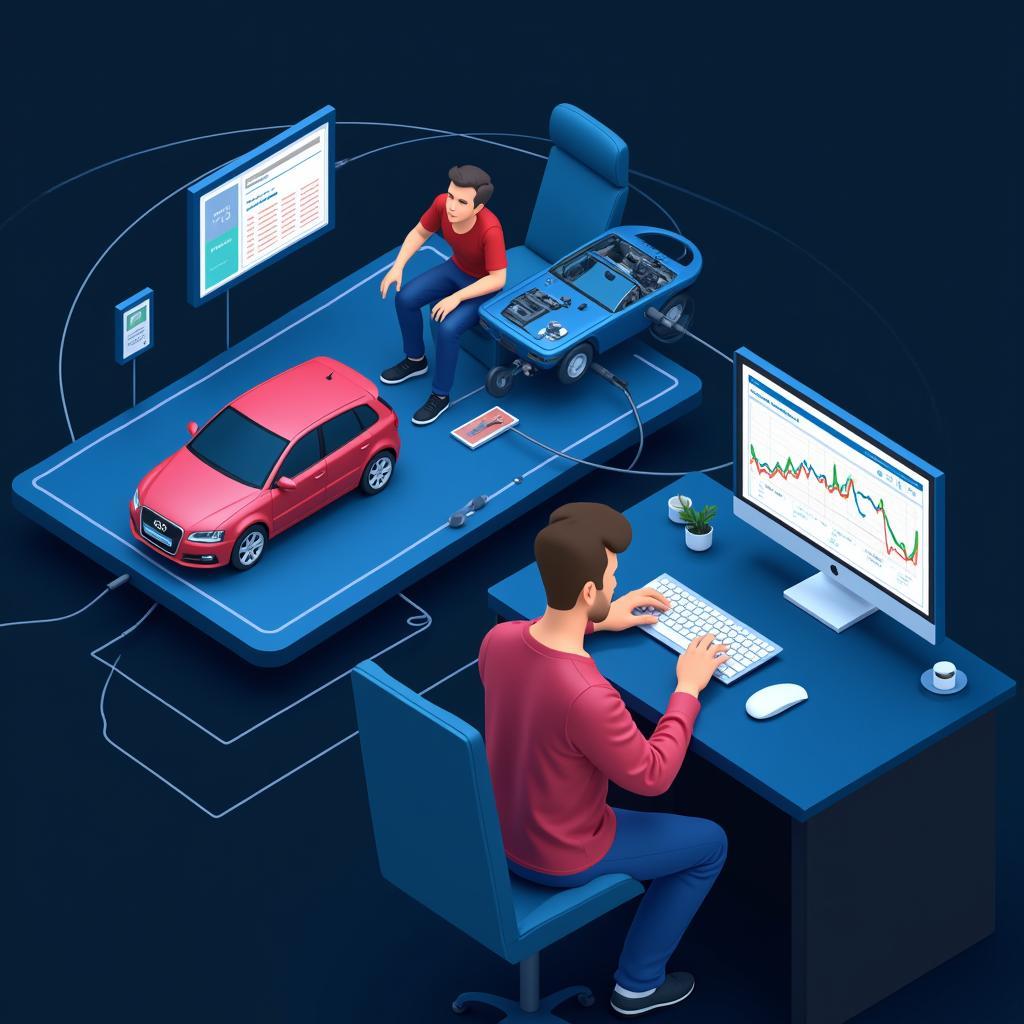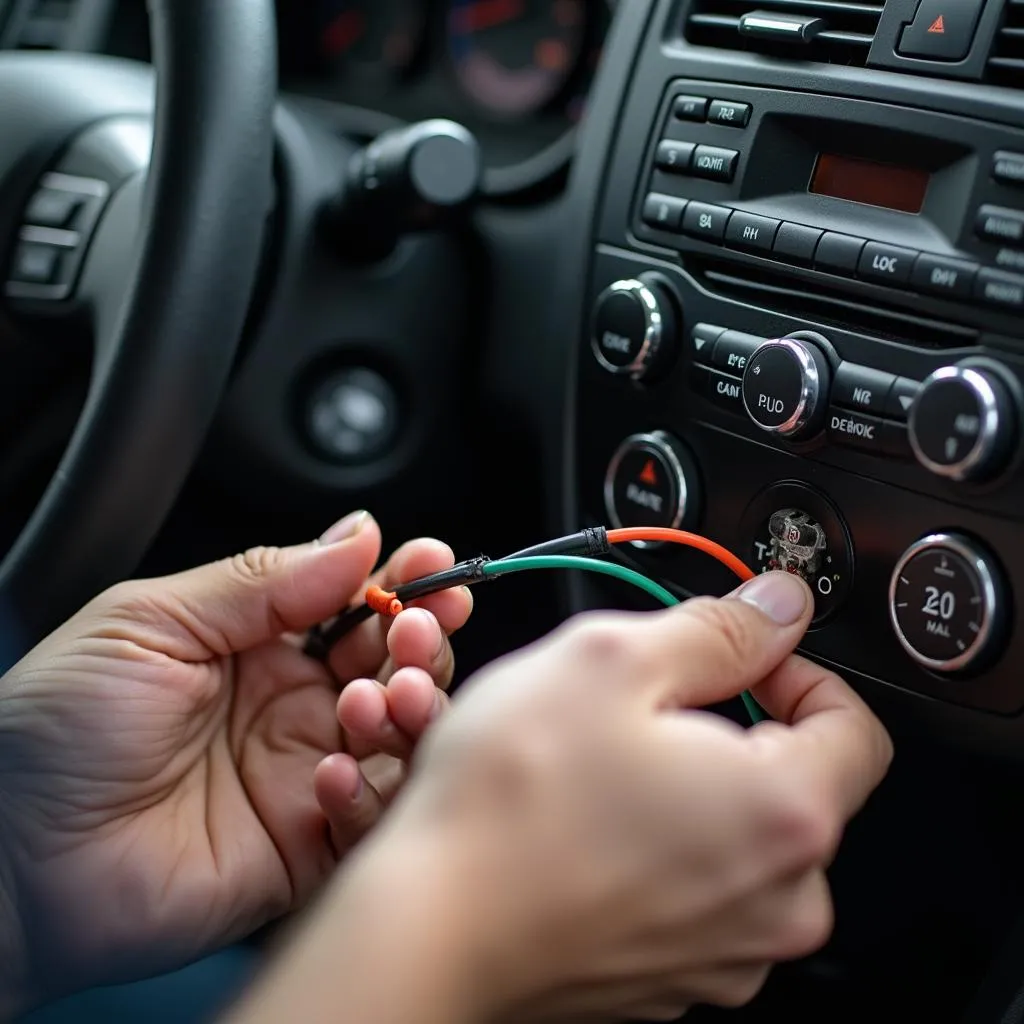The brake warning light on your dashboard is a crucial safety feature, designed to alert you to potential problems within your vehicle’s braking system. Ignoring this warning light could lead to dangerous situations and costly repairs. This comprehensive guide, written by an automotive electrical engineering expert specializing in remote diagnostics and software solutions, will delve into the common causes of a brake warning light, how to diagnose the issue, and the possible solutions.
Understanding Your Brake Warning Light
The brake warning light can illuminate for several reasons, not all of which signal a catastrophic failure. Here’s what your brake warning light could be trying to tell you:
- Low Brake Fluid: This is the most common reason for the brake warning light to turn on. Brake fluid is essential for transmitting force from your brake pedal to the wheels, allowing your car to stop. A leak in the system or worn brake pads can lead to low brake fluid levels.
- Parking Brake Engaged: It might seem obvious, but sometimes the simplest explanation is the correct one. The brake warning light will often illuminate if your parking brake is even slightly engaged.
- ABS Issue: Modern vehicles are equipped with Anti-lock Braking Systems (ABS) that prevent wheel lockup during hard braking. If your ABS system malfunctions, the brake warning light may illuminate along with the ABS warning light.
- Brake Pad Wear: Most modern vehicles have brake pad wear sensors that trigger the warning light when the brake pads reach a certain level of wear.
- Hydraulic System Failure: A serious issue such as a malfunctioning master cylinder or a leak in the brake lines can also trigger the brake warning light.
Diagnosing the Problem
 Checking Brake Fluid Level
Checking Brake Fluid Level
If your brake warning light turns on, don’t panic. Here are some steps to help you diagnose the problem:
- Check Your Parking Brake: Ensure the parking brake is fully disengaged.
- Inspect Brake Fluid Level: Locate the brake fluid reservoir under the hood (refer to your owner’s manual) and check the fluid level. If it’s below the minimum mark, you likely have a leak or worn brake pads.
- Look for Visible Leaks: Inspect the area around the brake fluid reservoir, brake lines, and near the wheels for any signs of fluid leaks. Brake fluid is typically clear or amber in color and has a slightly oily texture.
- Check for ABS Warning Light: If the ABS warning light is also illuminated, there might be a problem with the ABS system.
- Listen for Unusual Noises: When applying the brakes, listen for any unusual noises like grinding, squeaking, or clicking, which could indicate worn brake pads or other issues.
“Even if you’re comfortable with basic car maintenance, I always recommend consulting with a qualified mechanic for any brake-related issues,” says John Miller, an ASE-certified master technician with over 20 years of experience. “Brakes are critical for your safety, and it’s best to leave complex diagnostics and repairs to the professionals.”
Remote Diagnostics and Software Solutions
In today’s technologically advanced world, remote diagnostics and software solutions are changing the landscape of automotive repair. By connecting your car to a specialized diagnostic tool, skilled technicians can remotely access your vehicle’s computer system, read error codes, and pinpoint the root cause of the problem. This allows for quicker diagnoses, more accurate repair recommendations, and in some cases, even software-based fixes for certain issues.
 Remote Diagnostics in Action
Remote Diagnostics in Action
When to Seek Professional Help
While some brake issues might seem minor, it’s crucial to remember that your brakes are your vehicle’s most important safety system. If you’re unsure about the cause of your brake warning light, or if you’ve identified a leak or other serious issue, it’s best to seek immediate professional help.
Ignoring a brake warning light could lead to brake failure, putting you and others at risk. Regular brake inspections and timely repairs are essential for maintaining a safe and reliable vehicle.
FAQs
1. Can I drive with the brake warning light on?
It’s not recommended to drive with the brake warning light on. It indicates a potential problem with your braking system.
2. How much does it cost to fix a brake warning light issue?
The cost of repair depends on the underlying cause. A simple brake fluid top-up might cost around $50, while a complete brake system repair could cost upwards of $1000.
3. How often should I check my brake fluid?
It’s a good practice to check your brake fluid level at least once a month and before long trips.
4. Can worn brake pads cause the brake warning light to come on?
Yes, most modern cars have wear sensors in the brake pads that trigger the warning light when the pads are worn.
5. How long can I drive with worn brake pads?
Driving with worn brake pads is dangerous and can damage your rotors. It’s best to replace them as soon as you notice any signs of wear or if the warning light illuminates.
Remember, a well-maintained braking system is paramount for your safety and the safety of others on the road. If your brake warning light illuminates, address the issue promptly and seek professional help if needed.

